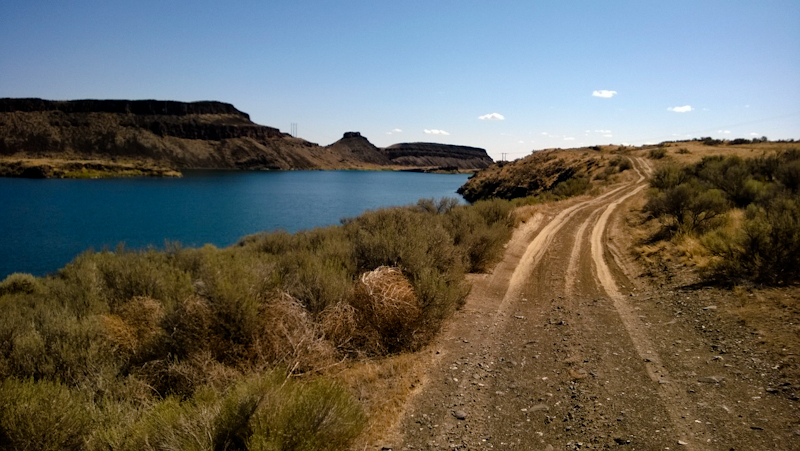My project for the past few weeks has been studies in acrylic for the North Cascades design. I chose acrylic because I wanted to be able to move fast and still be able to create definitive edges between the light and dark regions. My first study began as an 18″ x 24″ black and white and then I experimented with a bit of French Ultramarine in the snowfield. The blue definitely helped but I wanted to do something more interesting with the trees which, at this point were just black silhouettes.

My plan is that the final image will be 36″ x 48″. With this in mind, I worked up a second 18″ x 24″ study of a crop containing trees at the final scale. As you can see, I had a lot of difficulty getting the green paint to stick. My first stroke would go down fine, but if the brush touched the paint again before it dried, the paint would lift the paint off of the canvas. After consulting some friends and a quick check of the internet, I determined that the problem was the surface of the canvas pad, which one post on WetCanvas described as “painting on waxed paper”.
I did like addition of the warmer greens and browns and the fact that the tree at the bottom no longer merges with the black background.

While doing the second study, I realized that a triangle of the lower left represents a rounded hill that is closer than the snowfields above. My third study attempted to differentiate these two snowfields, while doing a better job rendering the tree silhouettes. I used a bit of Prussian Blue in the background. The trees are Raw Umber, lightened in some places with Light Green (Blue Shade).
I chose these specific colors because they are some of the most opaque in the Golden Heavy Body Acrylic line. I also switched to a piece of pre-primed Dick Blick canvas which took the paint better than the Fredrix Canvas pad.

I like the direction the piece is going, but I have to work through a few more issues before starting on larger image.
The first challenge is differentiating the snowfields in the distance from the closer snowfields, without losing the magnificent contrast. The third study uses a uniform region of light blue, and this approach seems less effective than the streaks of blue in the first study. The first study really retains the brightness of the snowfields while using texture to indicate shape. I also like the color of the French Ultramarine in the first study more than the Prussian Blue in the third study.
The second challenge is differentiating the near darks from the far darks. I’d like the far darks to be cooler, but I don’t want to lighten them from Mars Black, so I plan to make the nearer darks warmer. Putting my darkest darks in the background will break all the rules of atmospheric perspective, but I think in this case it will look better. I may also need to use a warm gray to add some rounded form to the near snowfields. Whatever I do, it will be subtle.
The third challenge is to make the trees more interesting and less flat, while still retaining high contrast against the background snowfield. I will probably try painting the trees in multiples layers, going from dark to light, with the dark layer being almost black. The trees will be as light as those in the second study, but they will contain enough dark that they will really stand out against the white.
Finally, I plan to simplify the dark shapes in the distance, while adding more rocky and brushy texture to the nearer darks. Should be exciting!









